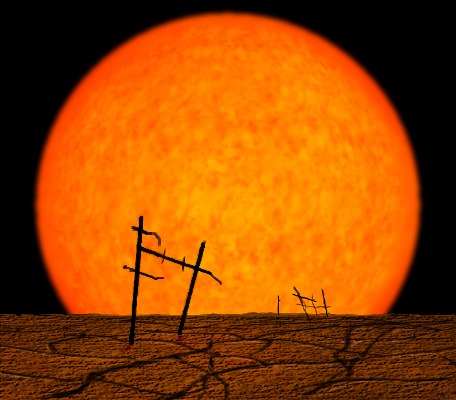EXPLORE: The Sun
This book will describe the stages our sun will pass through in its life cycle.
3. Red Giant

When the sun is 12.2 billion years old it will enter the Red Giant phase. At this point, the outer layers of the sun will expand, but its core will contract. The sun will become big enough to completely consume the planet Mercury. As a red giant, the sun will be cooler in temperature, but brighter. When the Sun reaches its maximum size as a red giant, helium fusion will occur in the core, and the star will begin to release more energy. As a result, the sun will shrink in size, but become hotter. The carbon within the sun begins to collapse inward, as helium begins to fuse into carbon. Elements heavier than carbon typically do not fuse inside small-mass stars. In order for nuclear fusion of heavier elements to take place, the sun would have to be about four times bigger than it is. Once the Sun is 12.3 billion years old, it will run out of helium. Since the sun doesn't have any more fuel to burn, this stage marks the beginning of the end.